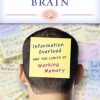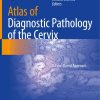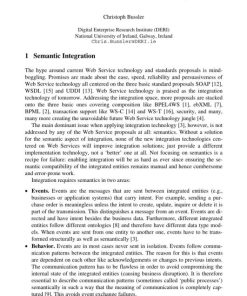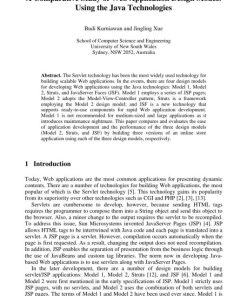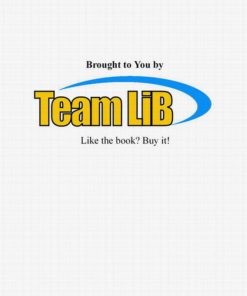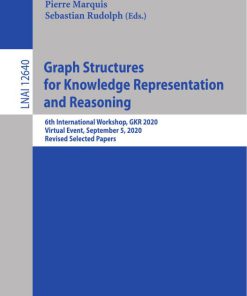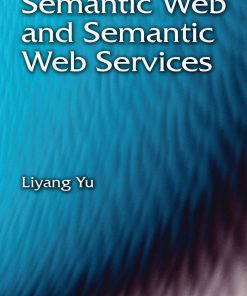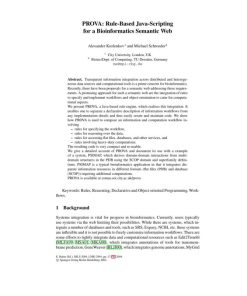Foundations of Semantic Web Technologies 1st Edition by Pascal Hitzler, Markus Krotzsch, Sebastian Rudolph ISBN 9781439890028 1439890021
$50.00 Original price was: $50.00.$25.00Current price is: $25.00.
Authors:Pascal Hitzler; Markus Krotzsch; Sebastian Rudolph , Series:IT & Computer [155] , Tags:Computers; Programming; Games; Data Science; Data Analytics; Software Development & Engineering; Systems Analysis & Design; Internet; General , Author sort:Hitzler, Pascal & Krotzsch, Markus & Rudolph, Sebastian , Ids:Google; 9781420090512 , Languages:Languages:eng , Published:Published:Aug 2009 , Publisher:CRC Press , Comments:Comments:Thoroughly covering basic introductions and intuitions, technical details, and formal foundations, this text focuses on the established foundations in this area that have become relatively stable over time. It presents the latest developments in Semantic Web standards, including RDF, RDF Schema, OWL 2, RIF, and SPARQL. It also explores formal semantics, OWL querying, the relationship between rules and OWL, and ontology engineering and applications.
Foundations of Semantic Web Technologies 1st Edition by Pascal Hitzler, Markus Krotzsch, Sebastian Rudolph – Ebook PDF Instant Download/Delivery. 9781439890028 ,1439890021
Full download Foundations of Semantic Web Technologies 1st Edition after payment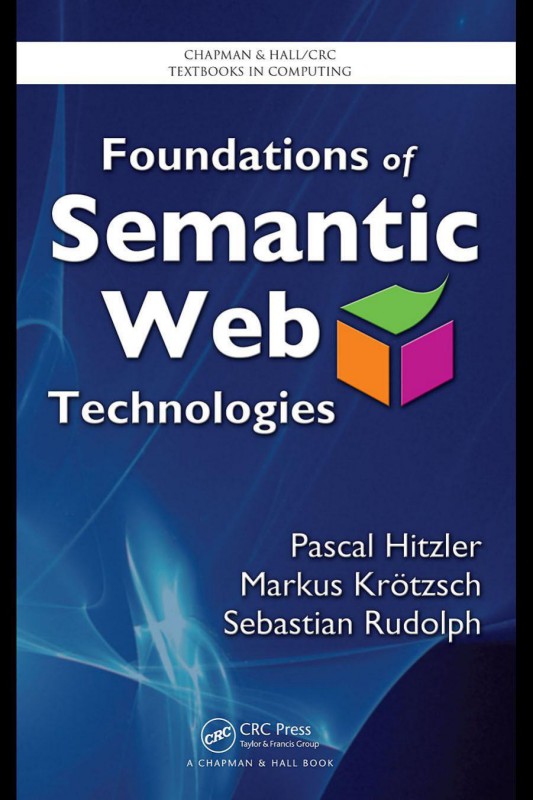
Product details:
ISBN 10: 1439890021
ISBN 13: 9781439890028
Author: Pascal Hitzler, Markus Krotzsch, Sebastian Rudolph
Foundations of Semantic Web Technologies 1st Edition Table of contents:
Chapter 1 The Quest for Semantics
1.1 Building Models
FIGURE 1.1: The Tree of Porphyry, an early tree structure in knowledge modeling; diagram based on a translation in [Sow00]
1.2 Calculating with Knowledge
1.3 Exchanging Information
1.4 Semanic Web Technologies
1.5 Further Reading
Part I Resource Description Language RDF
Chapter 2 Simple Ontologies in RDF and RDF Schema
FIGURE 2.1: A simple RDF graph describing the relationship between this book and the publisher, CRC Press
2.1 Introduction to RDF
2.1.1 Graphs Instead of Trees
2.1.2 Names in RDF: URIs
2.1.3 Data Values in RDF: Literals
FIGURE 2.2: The basic construction scheme for URIs
FIGURE 2.3: An RDF graph with literals for describing data values
2.2 Syntax for RDF
2.2.1 From Graphs to Triples
2.2.2 Simple Triple Syntax: N3, N-Triples and Turtle
2.2.3 The XML Serialization of RDF
2.2.4 RDF in XML: URIs and Other Problems
2.2.5 Shorter URIs: XML Entities and Relative URIs
2.2.6 Where Do URIs Come From? What Do They Mean?
FIGURE 2.4: Summary of abbreviation mechanisms in RDF/XML
FIGURE 2.5: An RDF graph with typed literals
2.3 Advanced Features
2.3.1 Datatypes in RDF
2.3.2 Language Settings and Datatypes
Similar yet distinct
2.3.3 Many-Valued Relationships
FIGURE 2.6: Representing many-valued relationships in RDF
2.3.4 Blank Nodes
FIGURE 2.7: Representing auxiliary resources by blank nodes
2.4 Simple Ontologies in RDF Schema
2.4.1 Classes and Instances
2.4.2 Subclasses and Class Hierarchies
2.4.3 Properties
FIGURE 2.8: Example for class hierarchies in RDFS
2.4.4 Subproperties and Property Hierarchies
2.4.5 Property Restrictions
2.4.6 Additional Information in RDFS
2.5 Encoding of Special Datastructures
FIGURE 2.9: Additional information in RDFS documents
2.5.1 Lists in RDF
2.5.1.1 RDF Container
FIGURE 2.10: A list of type rdf: Seq in RDF
2.5.1.2 Containers in RDFS
2.5.1.3 RDF Collections
FIGURE 2.11: A collection in RDF
2.5.2 Propositions About Propositions: Reification
FIGURE 2.12: Example of multiple reification in graph representation
2.6 An Example
FIGURE 2.13: Graph representation of a simple RDFS ontology
2.7 Summary
2.7.1 Overview of RDF(S) Language Constructs
2.8 Exercises
2.9 Further Reading
Chapter 3 RDF Formal Semantics
3.1 Why Semantics?
3.2 Model-Theoretic Semantics for RDF(S)
FIGURE 3.1: Definition of the entailment relation via models
FIGURE 3.2: Correspondence of interpretations
3.2.1 Simple Interpretations
FIGURE 3.3: Schematic representation of a simple interpretation
FIGURE 3.4: Criterion for the validity of a triple with respect to an interpretation
3.2.2 RDF-Interpretations
FIGURE 3.5: Example of an interpretation
3.2.3 RDFS Interpretations
3.2.4 Interpretation of Datatypes
3.2.5 Worked Example
FIGURE 3.6: Example of a simple interpretation
FIGURE 3.7: Example of an RDF-interpretation
FIGURE 3.8: Example of IS
3.3 Syntactic Reasoning with Deduction Rules
3.3.1 Deduction Rules for Simple Entailment
THEOREM 3.1
3.3.2 Deduction Rules for RDF-Entailment
FIGURE 3.9: Example of simple entailment
FIGURE 3.10: Graph that is simply entailed by the graph from Fig. 2.3
FIGURE 3.11: Example deduction illustrating Theorem 3.1
THEOREM 3.2
3.3.3 Deduction Rules for RDFS-Entailment
THEOREM 3.3
3.3.4 Additional Rules for Datatypes
3.3.5 Example of an RDFS Deduction
FIGURE 3.12: Graph G2, possibly RDFS-entailed by G1
3.4 The Semantic Limits of RDF(S)
FIGURE 3.13: Example of an RDFS deduction
3.5. Summary
3.6 Exercises
3.7 Further Reading
Part II Web Ontology Language OWL
Chapter 4 Ontologies in OWL
FIGURE 4.1: Sentences which cannot be modeled in RDF(S) in a sufficiently precise way
4.1 OWL Syntax and Intuitive Semantics
FIGURE 4.2: The three sublanguages of OWL and their most important general properties. Further details can be found in Section 4.2
4.1.1 The Header of an OWL Ontology
4.1.2 Classes, Roles, and Individuals
FIGURE 4.3: XML datatypes for OWL
FIGURE 4.4: Logical inference by transitivity of rdfs:subClassOf
4.1.3 Simple Class Relations
4.1.4 Relations Between Individuals
FIGURE 4.5: Example of an inference with owl:disjointWith
FIGURE 4.6: Example of an inference with owl:equivalentClass
FIGURE 4.7: Example of an inference with individuals
FIGURE 4.8: Example inference with owl:sameAs
4.1.5 Closed Classes
4.1.6 Boolean Class Constructors
FIGURE 4.9: Example inference with closed classes
FIGURE 4.10: Classes via oneOf and datatypes
FIGURE 4.11: Example inference using nested Boolean class constructors
4.1.7 Role Restrictions
FIGURE 4.12: owl:cardinality expressed using owl:minCardinality and owl:maxCardinality
FIGURE 4.13: Example ontology for role restrictions
4.1.8 Role Relationships
FIGURE 4.14: Example using role relationships
4.1.9 Role Characteristics
FIGURE 4.15: Role characteristics
4.1.10 Types of Inferences
4.2 OWL Species
4.2.1 OWL Full
4.2.2 OWL DL
4.2.3 OWL Lite
4.3 The Forthcoming OWL 2 Standard
4.3.1 OWL 2 DL
4.3.1.1 Type Separation, Punning and Declarations
4.3.1.2 Disjoint Classes
4.3.1.3 Role Characteristics and Relationships
4.3.1.4 Inverse Roles
4.3.1.5 Role Chains
4.3.1.6 Qualified Cardinality Restrictions
4.3.1.7 The Self Construct
4.3.1.8 Negated Role Assignments
4.3.1.9 Datatypes
FIGURE 4.16: Datatype constraining facets: restricting the allowed range of an integer value
4.3.2 OWL 2 Profiles
4.3.2.1 OWL 2 EL
4.3.2.2 OWL 2 QL
4.3.2.3 OWL 2 RL
4.3.3 OWL 2 Full
4.4 Summary
4.4.1 Overview of OWL 1 Language Constructs
4.4.1.1 Header
4.4.1.2 Relations Between Individuals
4.4.1.3 Class Constructors and Relationships
4.4.1.4 Role Constructors, Relationships and Characteristics
4.1.5 Allowed Datatypes
4.4.2 Overview of Additional OWL 2 Language Constructs
4.4.2.1 Declaring Individuals
4.4.2.2 Class Relationships
4.4.2.3 Role Characteristics and Relationships
4.4.2.4 Role Restrictions
4.4.2.5 Role Assignments
4.4.2.6 Datatype Restrictions
4.4.2.7 Additional Datatypes
4.5 Exercises
4.6 Further Reading
Chapter 5 OWL Formal Semantics
5.1 Description Logics
5.1.1 The Description Logic
5.1.1.1 Building Blocks of
5.1.1.2 Modeling Part of OWL in
5.1.1.3 Formal Syntax of
5.1.2 OWL DL as Description Logic
5.1.2.1 Class Constructors and Relationships
5.1.2.2 Relationships Between Individuals
5.1.2.3 Role Constructors, Role Relationships, and Role Characteristics
5.1.2.4 Datatypes
5.1.2.5 and OWL DL
5.1.3 Naming Description Logics – and How They Relate to the OWL Sublanguages
5.1.3.1 Role Functionality
5.1.3.2 Qualified Cardinality Restrictions
5.1.3.3 Generalized Role Inclusions
FIGURE 5.1: Correspondence between OWL variants and description logics
5.1.3.4 Existential Role Restrictions
5.1.3.5 OWL Sublanguages and Description Logics
5.1.4 Formal Syntax of
5.1.4.1 RBoxes
5.1.4.2 Knowledge Bases
5.1.4.3
5.2 Model-Theoretic Semantics of OWL
5.2.1 Extensional Semantics of
5.2.1.1 Interpreting Individuals, Classes, and Roles
FIGURE 5.2: Schematic representation of a DL interpretation
5.2.1.2 Interpreting Axioms
FIGURE 5.3: Models for the example knowledge base from page 174
5.2.1.3 Logical Consequences
FIGURE 5.4: Logical consequences of a knowledge base. The first line states that C ⊑ D is a logical consequence of K if and only if holds for all models of K, which is the case if and only if holds for all models of K.
FIGURE 5.5: Example of logical consequence
FIGURE 5.6: Examples of notions of consistency and satisfiability
5.2.2 Semantics via Predicate Logic
5.2.2.1 Translating Class Inclusion Axioms
5.2.2.2 Translating Individual Assignments
5.2.2.3 Translating RBoxes
5.2.2.4 Properties of the Translation and an Example
FIGURE 5.7: Translating general inclusion axioms into first-order predicate logic with equality. Note that πx(≥0S.C) = ⊤(x). We use auxiliary functions πx, πx1, etc., where x, x1, etc. are variables. Also note that variables x1 …, xn+1 introduced on the right-hand sides should always be variables which are new, i.e. which have not yet been used in the knowledge base. Obviously, renamings are possible — and indeed advisable for better readability. The axiom D ⊑ ∃R.∃S.C, for example, could be translated to (∀x)((D(x)) → (∃y)(R(x, y) ∧ (∃z)(S(y, z) ∧ C(z)))).
FIGURE 5.8: Translating RBoxes into first-order predicate logic
5.3 Automated Reasoning with OWL
FIGURE 5.9: Example of translation from description logic syntax to first-order predicate logic syntax
5.3.1 Inference Problems
5.3.2 Negation Normal Form
FIGURE 5.10: Transformation of a knowledge base K into negation normal form
5.3.3 Tableaux Algorithm for
5.3.3.1 Initial Examples
5.3.3.2 The Naive Tableaux Algorithm for
FIGURE 5.11: Example of an initial tableau given the knowledge base K = {A(a), (∃R.B)(a), R(a, b), R(a, c), S(b, b), (A ⊔ B)(c), ¬A ⊔ (∀S.B)}
FIGURE 5.12: Expansion rules for the naive tableaux algorithm
5.3.3.3 The Tableaux Algorithm with Blocking for
FIGURE 5.13: Worked example of tableau
5.3.3.4 Worked Examples
5.3.3.4.1 Blocking
5.3.3.4.2 Open World
5.3.3.4.3 A Sophisticated Example
5.3.4 Tableaux Algorithm for
FIGURE 5.14: Final tableau for the example from Section 5.3.3.4.3
FIGURE 5.15: Example of notions of successor, predecessor, neighbor and ancestor
5.3.4.1 Blocking for
5.3.4.2 The Algorithm
5.3.4.3 Worked Examples
5.3.4.3.1 Cardinalities
FIGURE 5.16: Expansion rules (part 1) for the tableaux algorithm
FIGURE 5.17: Expansion rules (part 2) for the tableaux algorithm
5.3.4.3.2 Choose
5.3.4.3.3 Inverse Roles
5.3.4.3.4 Transitivity and Blocking
5.3.4.3.5 Why We Need Pairwise Blocking
FIGURE 5.18: Worst-case complexity classes of some description logics
5.3.5 Computational Complexities
5.4 Summary
5.5 Exercises
5.6 Further Reading
Part III Rules and Queries
Chapter 6 Ontologies and Rules
6.1 What Is a Rule?
6.2 Datalog as a First-Order Rule Language
6.2.1 Introduction to Datalog
FIGURE 6.1: Example datalog program
6.2.2 Semantics of Datalog
FIGURE 6.2: Example datalog interpretation of predicate symbols
6.3 Combining Rules with OWL DL
6.3.1 Combined Semantics: Datalog and Description Logics
FIGURE 6.3: Description logic axioms extending the datalog program from Fig. 6.1
6.3.2 Computing Conclusions
6.3.3 Description Logic Rules
FIGURE 6.4: Examples of simple rule dependency graphs
FIGURE 6.5: Transforming Description Logic Rules into axioms
FIGURE 6.6: DL-safety of rules depends on the given description logic axioms
6.3.4 DL-safe Rules
FIGURE 6.7: Combination of DL-safe rules, DL Rules, and description logic axioms
6.4 Rule Interchange Format RIF
6.4.1 RIF-Core
6.4.2 Object-Oriented Data Structures: Frames in RIF
6.4.3 RIF-Core Semantics
6.4.4 XML Syntax for RIF-Core
FIGURE 6.8: Transformation of RIF-Core rules to datalog
FIGURE 6.9: Transformation of RIF presentation syntax to XML syntax
6.4.5 Combining RIF with OWL DL
FIGURE 6.10: Example RIF-Core rules, formatted for OWL-RIF integration
6.4.6 Combining RIF with RDF(S)
6.4.6.1 Simple Semantics
6.4.6.2 RDF Semantics
6.4.6.3 RDFS Semantics
6.4.7 Further Features of RIF-Core and RIF-BLD
FIGURE 6.11: Additional first-order axioms for simulating RDFS semantics; initial labels refer to the corresponding deduction rule in Section 3.3.3
6.5 Summary
6.6 Exercises
6.7 Further Reading
Chapter 7 Query Languages
7.1 SPARQL: Query Language for RDF
7.1.1 Simple SPARQL Queries
7.1.2 Simple Graph Patterns: Triples and Variables
7.1.3 Blank Nodes in SPARQL
7.1.4 Complex Graph Patterns: Groups, Options, and Alternatives
7.1.5 Queries with Data Values
7.1.6 Filters
7.1.6.1 Comparison Operators
7.1.6.2 Special Operators
FIGURE 7.1: Unary operators for accessing specific parts of RDF literals
7.1.6.3 Boolean Operators
7.1.6.4 Arithmetic Operations
7.1.6.5 Errors
7.1.7 Result Formats
7.1.8 Modifiers
7.1.9 Semantics and Algebra of SPARQL
7.1.9.1 Translating Queries to SPARQL Algebra
7.1.9.2 Calculations in SPARQL Algebra
FIGURE 7.2: Example RDF document for illustrating query evaluation in SPARQL
7.1.9.3 Operators for Modifiers
FIGURE 7.3: Intermediate results in computing the result of a SPARQL query
7.1.10 Further Expressive Features of SPARQL
7.2 Conjunctive Queries for OWL DL
7.2.1 The Limits of OWL
7.2.2 Introduction to Conjunctive Queries
7.2.3 Non-Distinguished Variables
7.2.4 Conjunctive Queries and Rules
7.2.5 Conjunctive Queries and SPARQL
7.3 Summary
7.4 Exercises
7.5 Further Reading
Part IV Beyond Foundations
Chapter 8 Ontology Engineering
8.1 Requirement Analysis
8.2 Ontology Creation – Where Is Your Knowledge?
8.2.1 It’s in Your Heads: Human Sources
8.2.2 It’s in Your Books: Unstructured sources
FIGURE 8.1: Parse trees for the two example sentences
8.2.3 It’s on the Web: Semistructured Sources
8.2.4 It’s in the Databases: Structured Sources
8.3 Quality Assurance of Ontologies
8.3.1 Ontology Evaluation: What Makes an Ontology Good
8.3.2 How to (Not) Model Correctly
8.3.2.1 Don’t forget disjointness
8.3.2.2 Don’t forget role characteristics
8.3.2.3 Don’t choose too specific domains or ranges
8.3.2.4 Be careful with quantifiers
8.3.2.5 Don’t mistake parts for subclasses
8.3.2.6 Watch the direction of roles
8.3.2.7 Don’t confuse class subsumption and class equivalence
8.3.2.8 Don’t translate too verbally
8.3.3 Ontology Refinement: How to Make Ontologies Better
8.4 Modular Ontologies: Divide and Conquer
8.5 Software Tools
8.5.1 Ontology Editors
8.5.1.1 Protégé
8.5.1.2 TopBraid Composer
8.5.1.3 NeOn Toolkit
8.5.1.4 OntoStudio
8.5.1.5 SWOOP
8.5.2 RDF Stores
8.5.2.1 Virtuoso
8.5.2.2 Redland
8.5.2.3 Sesame
8.5.2.4 AllegroGraph
8.5.2.5 OWLIM
8.5.3 OWL DL Reasoning Engines
8.5.3.1 Pellet
8.5.3.2 RacerPro
8.5.3.3 FaCT++
8.5.3.4 KAON2
8.5.3.5 SHER
8.5.4 Reasoning Engines for OWL 2 Profiles
8.5.4.1 CEL
8.5.4.2 Owlgres
8.5.5 QuOnto
8.5.5.1 Oracle 11g
8.5.6 Datalog and Rules Engines
8.5.6.1 XSB
8.5.6.2 SWI-Prolog
8.5.6.3 Ontobroker
8.5.6.4 DLV
8.5.6.5 IRIS
8.5.7 Further Systems
8.5.7.1 OWL API
8.5.7.2 Jena
8.6 Summary
8.7 Further Reading
Chapter 9 Applications
9.1 Web Data Exchange and Syndication
9.1.1 Endowing Web Data with Metadata
9.1.2 Vocabularies
FIGURE 9.1: Example RSS file
FIGURE 9.2: Example FOAF file
9.2 Semantic Wikis
9.2.1 Semantic MediaWiki
9.2.2 Applications
9.3 Semantic Portals
9.4 Semantic Metadata in Data Formats
9.5 Semantic Web in Life Sciences
9.6 Ontologies for Standardizations
9.7 RIF Applications
9.8 Toward Future Applications
9.9 Summary
9.10 Further Reading
Part V Appendices
Appendix A Extensible Markup Language XML
A.1 XML in a Nutshell
FIGURE A.1: The tree structure of XML
A.2 Syntax of XML
A.3 XML Schema
A.3.1 Elements, Attributes, and Datatypes
A.3.2 User-Defined Types
Appendix B Set Theory
B.1 Basic Notions
B.2 Set Operations
B.3 Relations and Functions
Appendix C Logic
C.1 Syntax
C.2 Semantics
THEOREM C.1
FIGURE C.1: Logical equivalences from Theorem C.1.
THEOREM C.2
THEOREM C.3
THEOREM C.4
C.3 Proof Theory and Decidability
THEOREM C.5
THEOREM C.6
THEOREM C.7
Appendix D Solutions to the Exercises
D.1 Solutions for Chapter 2
D.2 Solutions for Chapter 3
D.3 Solutions for Chapter 4
D.4 Solutions for Chapter 5
FIGURE D.1: Solution to Exercise 5.4
D.5 Solutions for Chapter 6
FIGURE D.2: Solution to Exercise 6.6
D.6 Solutions for Chapter 7
FIGURE D.3: Exercise 7.3 fourth query: Table for Join(BGP( ?object ?satellite1.), BGP(?object ?satellite2.))
FIGURE D.4: Exercise 7.3 fourth query: Table for Filter((!sameTERM(?satellite1,?satellite2)), Join(BGP(?object ?satellite1.), BGP(?object ?satellite2.) ) )
References
Index
People also search for Foundations of Semantic Web Technologies 1st Edition:
what is the foundation technology for web services
advantages of semantic web
a semantic web primer
emantic web technologies
semantic web future
You may also like…
eBook PDF
Security Technologies for the World Wide Web 2nd edition by Rolf Oppliger 1580535852 9781580535854
eBook PDF
Security Technologies for the World Wide Web 2nd edition by Rolf Oppliger 1580535852 9781580535854


